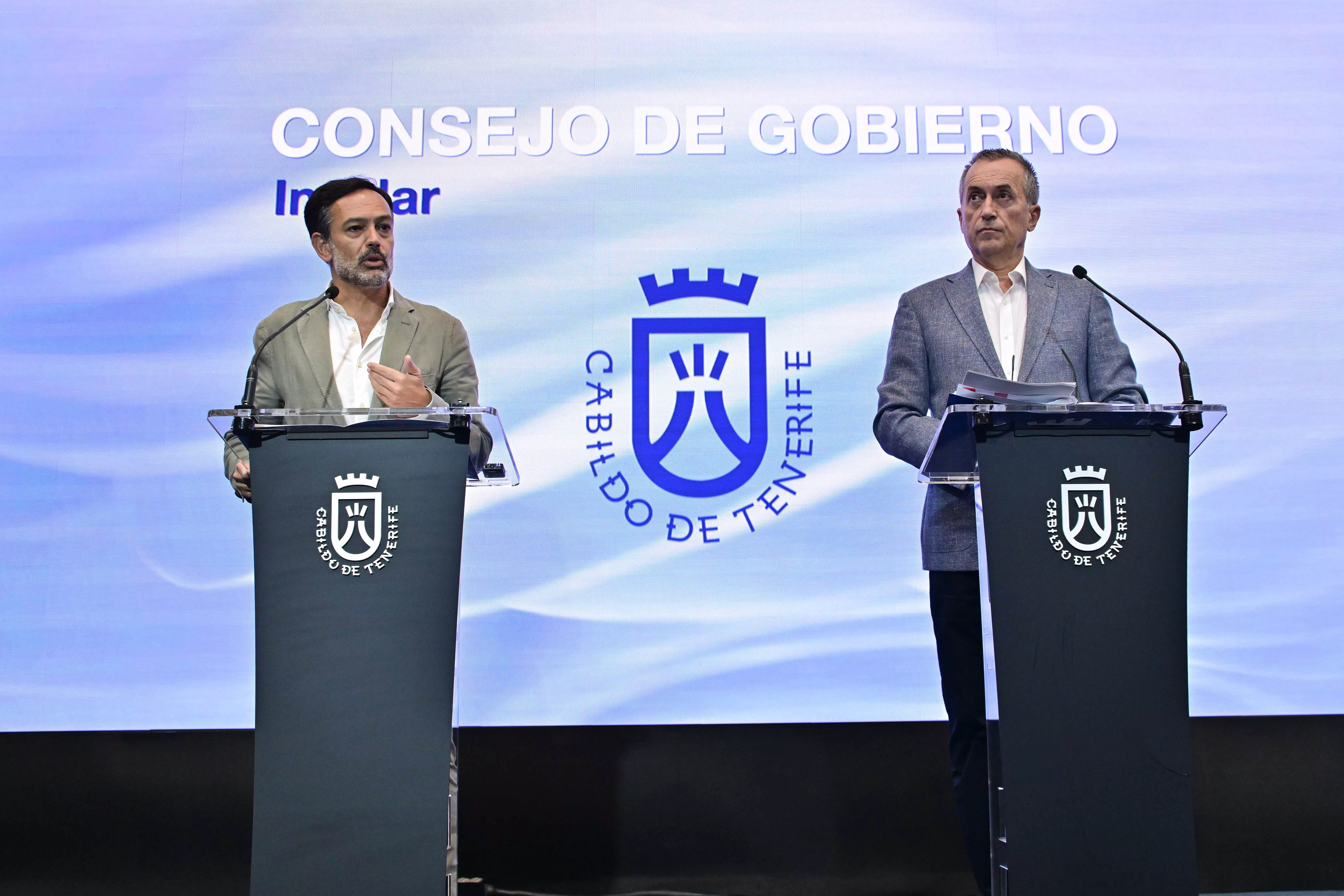The church of Santa Catalina, on Tacoronte, reopened its doors this Tuesday, November 23, 2021 after 27 months of closure for works that have allowed it to recover the lost splendor and guarantee the conservation of the enormous religious, historical and artistic legacy that it treasures within its walls. After an investment of more than 2,032,000 euros, financed by the Cabildo of Tenerife, the Bishopric of the Nivarian Diocese and the contributions of the faithful, Tacoronte it recovers one of its great symbols, the temple around which the current Tacoronte grew.
Declared Asset of Cultural Interest (BIC), with the category of monument, since May 1986, this church is one of the best examples of religious architecture on the island and it preserves some of the best examples of flamenco art in the Canary Islands and postcolonial art, which returned from America to the islands. “A jewel practically intact inside”, according to the mayor of Tacoronte José Daniel Díaz (NC), “Which now presents the image that our ancestors could see centuries ago.”
The day began with the return of the image of Santa Catalina, patron saint of Tacoronte, to his parish, after his temporary refuge in the Sanctuary of Christ since July 2019. Díaz did not hide his satisfaction in “a glorious night” in which his municipality recovered its mother temple, “home of the local patron and the soul of many tacoronteros, because here Tacoronte is born as we conceive it now” . A parish that is, at the same time, a true museum, so it will have long opening hours to allow visits, which he hopes will shortly “also incorporate the ascent of the tower, which is one of the restored elements in this performance.
The City Council of Tacoronte plans to allocate, in the municipal budget of 2022, a “significant grant” to help finance this reform, as announced by the mayor. The island president, Pedro Martin; the bishop of the Nivarian Diocese, Bernardo Alvarez, and the insular director of Territorial Planning and Historical Heritage, Emilio Fariña, also attended the reopening ceremony together with the architect in charge of the project, Jose Yeray Santos Santana.
The improvement works, carried out by the company Víctor Rodríguez e Hijos, have lasted two years and four months: they began on July 9, 2019 and concluded in October 2021
Pedro Martin He recalled that this project, «this essential work», was started by Josefa Mesa, «when she was the insular head of Heritage» and that today she occupies the Mayor’s Office of Guía de Isora, which he left to assume the Presidency of Tenerife. Martín stressed that “putting money in the restoration of our churches, of our ecclesiastical heritage, is to put money in cultural value and pay homage and respectfully comply with the emotional heritage that we carry within. This church has been the scene of good times, difficult times, encounters with new family members, communions, marriages, baptisms … it is an emotional part of the history of peoples, that which links us with the past, with our history and with people who are no longer there. In the opinion of Pedro Martin, “With this not only a patrimony of the tacoronteros is recovered, but a patrimony of all the people of Tenerife.”
Bernardo Álvarez also wanted to «thank the collaboration of the Cabildo of Tenerife that, through an agreement with the Diocese, allows that throughout the year we can restore various architectural works and also personal property. If it weren’t for this contribution, it would be impossible to sustain and restore all the heritage that the Church has on this island. The bishop has valued the work done and recalled that this church, from the year 1550, is one of the main monuments of Tenerife. A temple with three naves, with beautiful altarpieces that has been magnificently restored to prevent all the art that it houses inside from deteriorating over time.
The island director Emilio Fariña remarked “the importance of the collaboration that must take place between institutions in order to protect and conserve ecclesiastical property belonging to our historical heritage, to comply with the mandate of the Canary Islands Cultural Heritage Law and allow citizens to access the better conditions to our exceptional cultural heritage ».
The reform of the property, declared an Asset of Cultural Interest in 1986, has cost more than two million euros
This action has cost more than two million euros, with a total of 1,808,768.52 euros, financed 80% (1,447,570 euros) by the Cabildo of Tenerife, and 20% (361,892 euros) for the Bishopric of Tenerife, which also contributed another 222,074 euros “in fees and taxes.”
The architect of the work, Jose Yeray Santos Santana, recognized the “tremendous technical complexity of some works that forced the removal and reconstruction of the entire roof of the temple, while the protection of the set of works of art that it houses inside had to be guaranteed. The condition of the building was critical due to the uncontrolled entry of water through the roof, which rotted the wood and affected the walls. To understand the dimension of the work carried out, the architect stressed that “if all the wooden elements of this roof were put in line, they would occupy eight kilometers”.

















